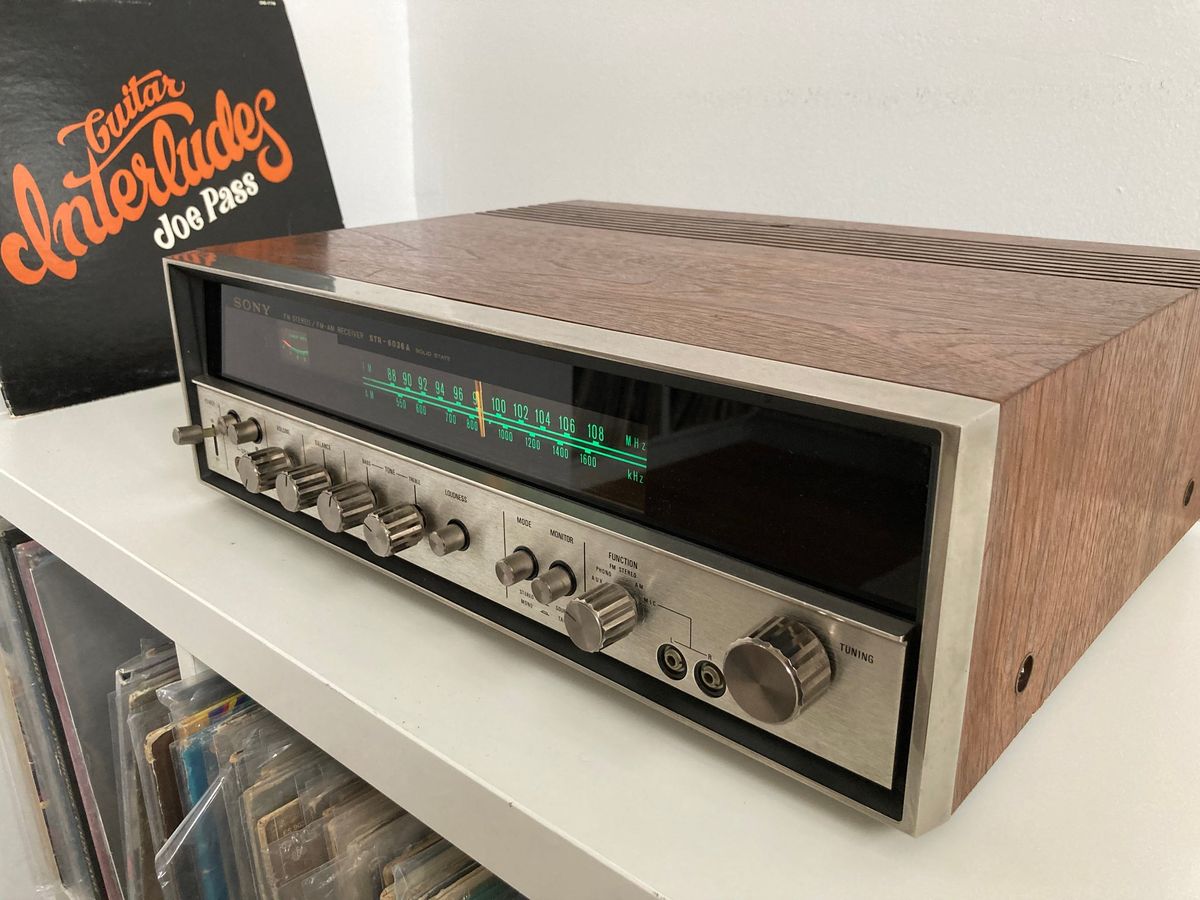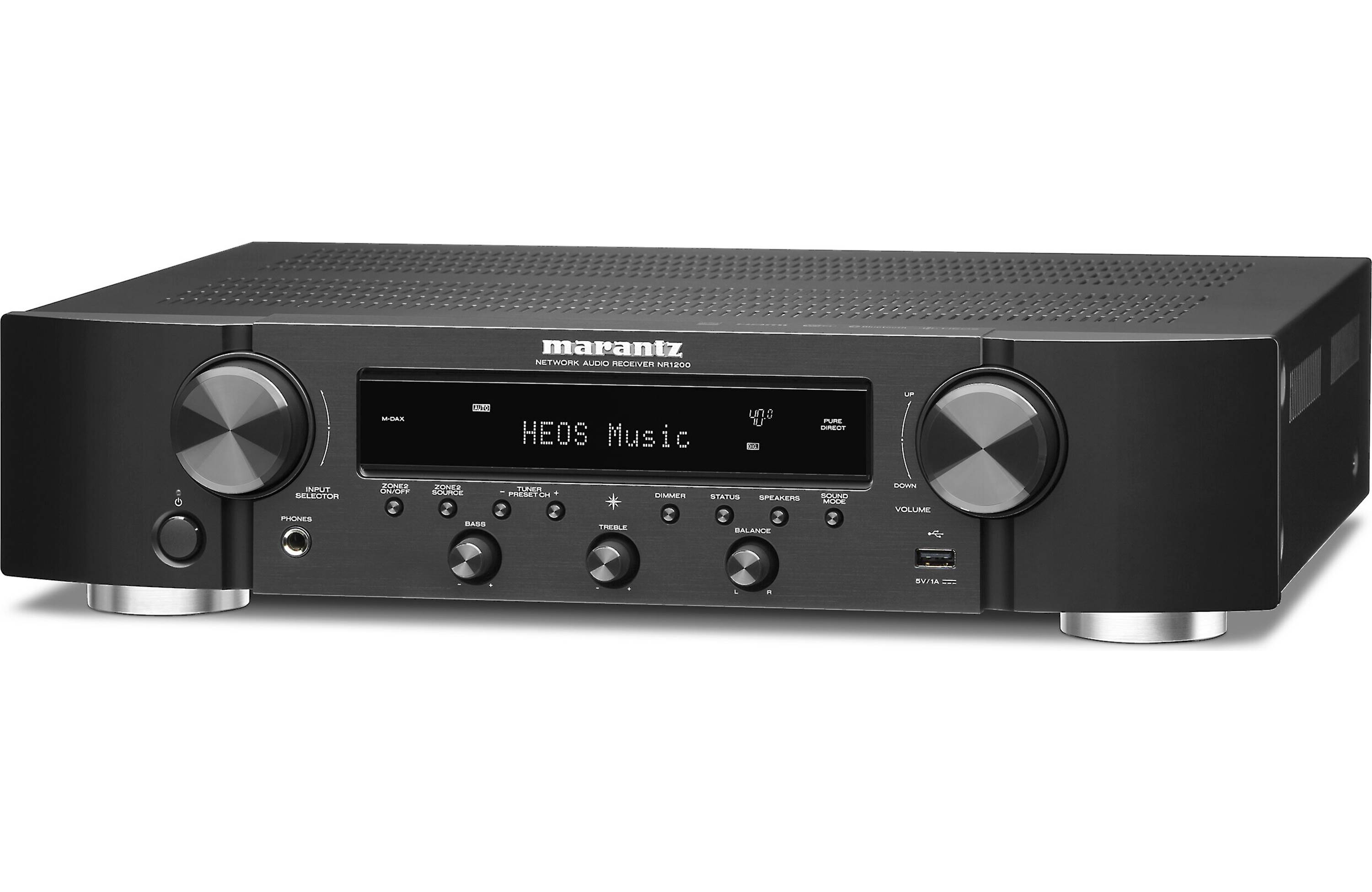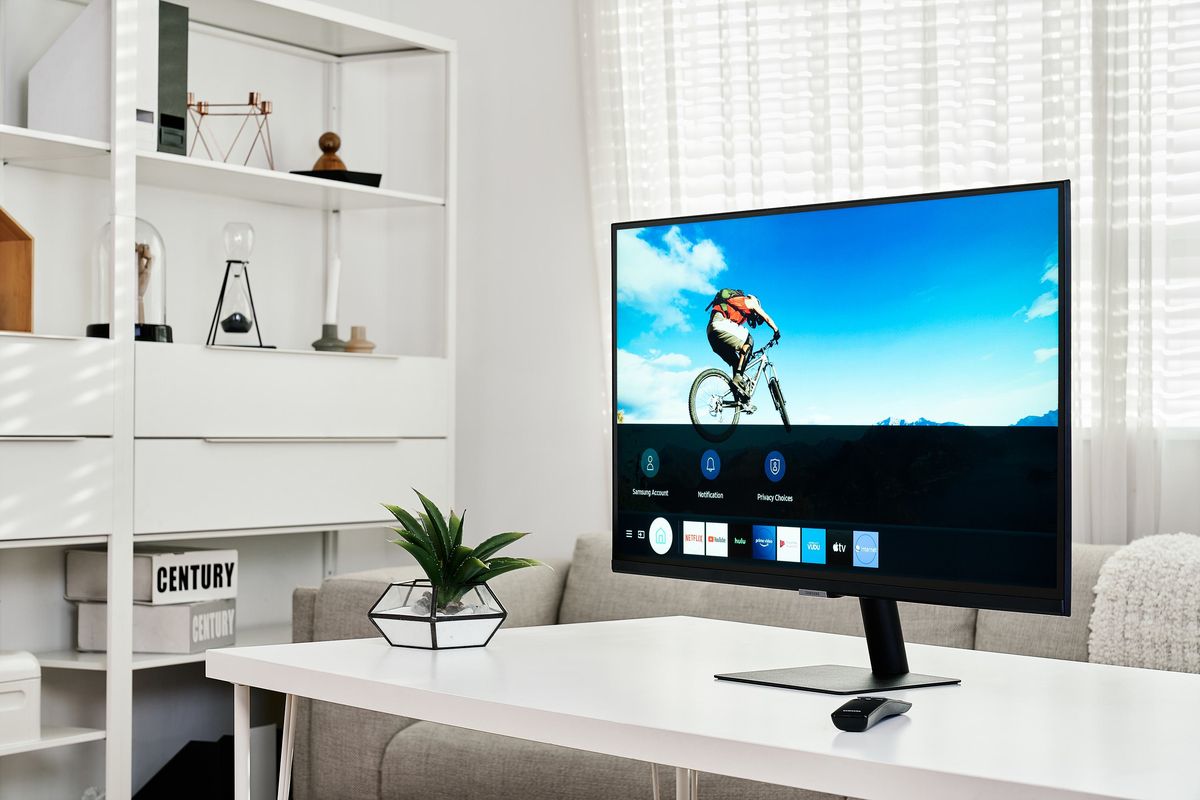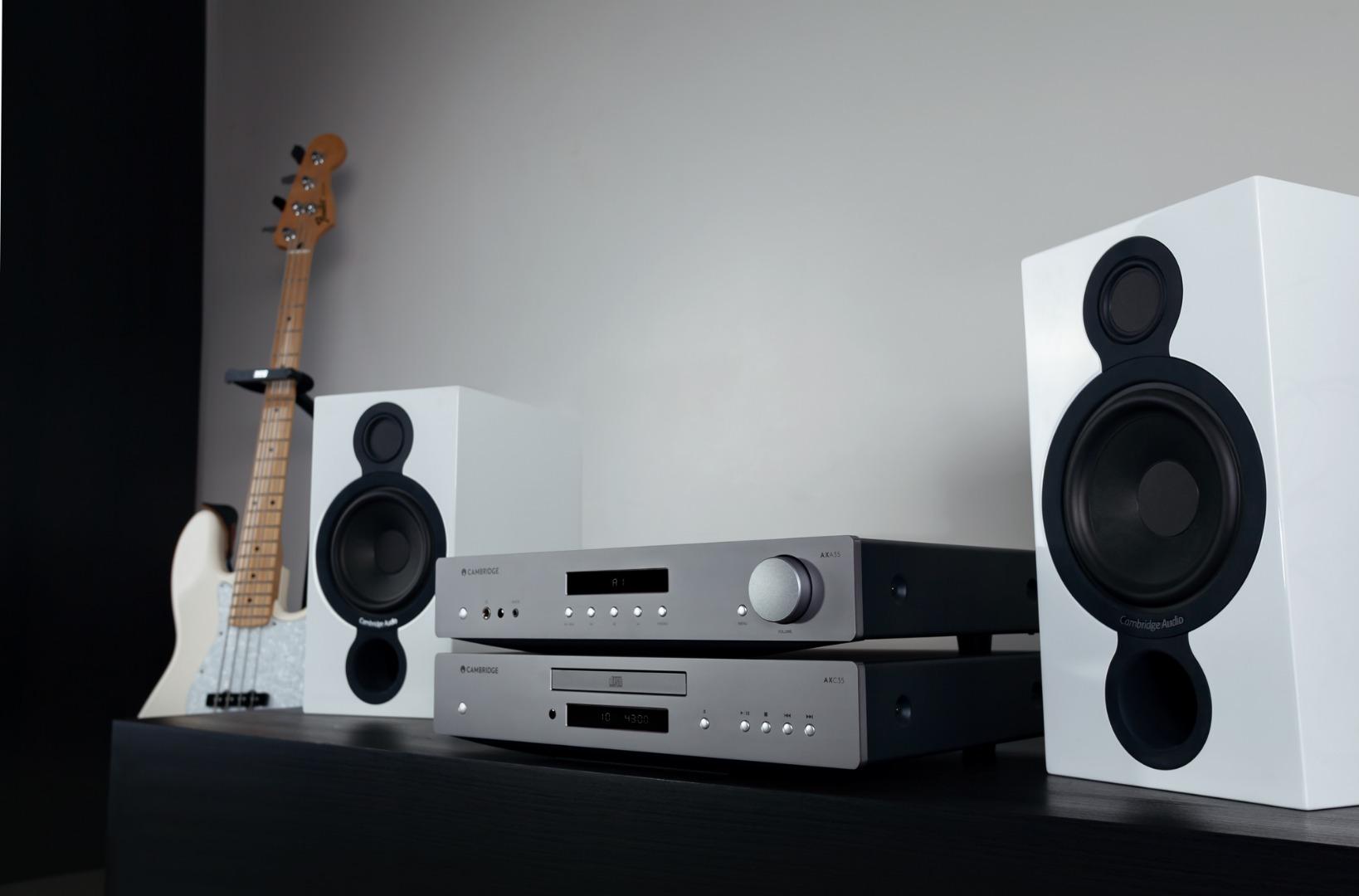Home>Production & Technology>Stereo>How To Choose A Stereo Receiver


Stereo
How To Choose A Stereo Receiver
Modified: March 8, 2024
Looking to upgrade your sound system? Learn how to choose the perfect stereo receiver for your needs and enjoy high-quality audio with ease.
(Many of the links in this article redirect to a specific reviewed product. Your purchase of these products through affiliate links helps to generate commission for AudioLover.com, at no extra cost. Learn more)
Table of Contents
- Introduction
- Understanding the Basics of Stereo Receivers
- Factors to Consider Before Buying a Stereo Receiver
- Power Output and Wattage
- Audio Channels and Speaker Support
- Connectivity Options
- Audio Decoding Formats
- Tuner Features and FM/AM Reception
- User Interface and Controls
- Additional Features and Functionality
- Price Range and Budget Considerations
- Conclusion
Introduction
Welcome to the world of stereo receivers, where audio bliss meets technological marvel. A stereo receiver is an essential component of any home audio system, acting as the control center for your music, movies, and more. Whether you’re a casual listener or an avid audiophile, finding the perfect stereo receiver can greatly enhance your audio experience.
In this article, we will delve into the intricacies of stereo receivers and provide you with valuable insights to help you make an informed decision when choosing the right one for your needs. From power output and speaker support to connectivity options and additional features, we will cover it all.
Understanding the fundamentals of stereo receivers is crucial before diving into the world of technical specifications and features. A stereo receiver combines a pre-amplifier, power amplifier, and a radio tuner into one unit. This versatile device not only allows you to control the volume and sound quality but also acts as a hub for connecting various audio sources such as CD players, turntables, and streaming devices.
Nowadays, stereo receivers offer much more than just basic functionality. They come packed with a wide range of features, including Bluetooth and Wi-Fi connectivity, multi-room audio support, and even integration with smart home systems. With so many options available in the market, it’s important to consider several factors before making a purchase to ensure you find the perfect stereo receiver that meets your specific requirements.
In the following sections, we will delve into the intricacies of stereo receivers, discussing the factors you should consider, the technical specifications to look out for, and the additional features that can enhance your overall audio experience. So, buckle up and get ready for a deep dive into the world of stereo receivers!
Understanding the Basics of Stereo Receivers
A stereo receiver is the heart of your audio system, responsible for receiving and amplifying audio signals from various sources and transmitting them to your speakers. It consists of several key components that work together to deliver high-quality sound.
The first component of a stereo receiver is the pre-amplifier. This stage controls the overall volume, tone, and balance of the audio signals. It allows you to adjust the sound according to your preference and optimize it for different genres of music or audio content.
The second component is the power amplifier. This stage takes the low-level signals from the pre-amplifier and boosts them to a level that can drive the speakers. The power output of a stereo receiver is measured in watts per channel, indicating how much power it can deliver to each speaker. Higher wattage generally results in louder and more dynamic sound reproduction.
Another critical aspect to consider is the audio channels and speaker support. Most stereo receivers support two main channels, referred to as 2.0 or stereo mode, which is ideal for traditional stereo setups. However, if you want a more immersive audio experience, look for receivers with additional channels such as 5.1 or even 7.1, which provide support for surround sound formats and dedicated subwoofers.
Connectivity options are also essential when selecting a stereo receiver. It’s important to consider how you will connect your audio sources, such as CD players, turntables, or streaming devices. Look for receivers with a variety of inputs, such as RCA, HDMI, or optical, to ensure compatibility with your existing equipment. Additionally, many modern receivers include Bluetooth, Wi-Fi, and USB connectivity, allowing you to stream music wirelessly or connect to online streaming services.
Moreover, the audio decoding formats supported by the stereo receiver play a vital role in your audio experience. Look for receivers that support common formats like Dolby Digital and DTS, as well as newer formats like Dolby Atmos and DTS:X for a more immersive and three-dimensional soundstage.
The tuner feature and FM/AM reception capability of the stereo receiver are also worth considering, especially if you enjoy listening to radio broadcasts. Look for receivers with a good tuner sensitivity and a wide range of preset stations to ensure clear and reliable reception of your favorite radio stations.
Lastly, the user interface and controls of the stereo receiver should be intuitive and user-friendly. A clear and well-laid-out front panel, along with a remote control or smartphone app, can greatly enhance the user experience and make it easier to navigate through the various settings and features.
By understanding these basic components and features of a stereo receiver, you will be better equipped to evaluate and compare different models to find the one that best suits your needs and preferences. Now that we have covered the fundamentals, let’s dive deeper into the technical aspects and additional features that can elevate your audio experience to new heights.
Factors to Consider Before Buying a Stereo Receiver
Choosing the right stereo receiver can be a daunting task, given the multitude of options available in the market. To help you make an informed decision, it’s important to consider several factors that can greatly impact your overall audio experience.
One of the most crucial factors is the power output and wattage of the stereo receiver. The wattage per channel determines the loudness of the audio produced. Consider the size of your room and the power requirements of your speakers to ensure that the receiver has enough power to deliver clear and impactful sound.
Next, it’s important to assess the audio channels and speaker support of the receiver. Determine whether you want a traditional stereo setup or if you prefer the immersive experience of surround sound. Look for receivers that support the number of channels you desire and have compatibility with dedicated subwoofers for enhanced bass reproduction.
The connectivity options offered by the stereo receiver are also a key consideration. Ensure that the receiver has the necessary inputs and outputs to connect all your audio sources, such as CD players, turntables, and streaming devices. Additionally, consider whether you want the convenience of wireless connectivity options like Bluetooth and Wi-Fi for streaming music directly from your devices or online services.
Furthermore, examine the audio decoding formats supported by the stereo receiver. Look for receivers that are compatible with popular formats like Dolby Digital and DTS, as well as newer formats like Dolby Atmos and DTS:X for a more immersive and cinematic audio experience.
Tuner features and FM/AM reception capabilities are also worth considering if you enjoy listening to radio broadcasts. Look for receivers with a reliable tuner and a wide range of preset stations for quick and easy access to your favorite radio channels.
The user interface and controls of the stereo receiver should also be taken into account. A well-designed and intuitive interface, along with a remote control or smartphone app, can greatly enhance user experience and make it easier to navigate through different settings and features.
Additional features and functionality can also play a role in your decision-making process. Some receivers offer multi-room audio capabilities, allowing you to play music in different rooms simultaneously. Others may have built-in streaming services or integration with smart home systems, offering added convenience and versatility.
Last but not least, consider your budget and price range. Stereo receivers come in a wide range of prices, so it’s important to set a budget and prioritize the features that are most important to you. Keep in mind that higher-priced receivers often offer more advanced features and better audio quality, but there are also excellent options available at more affordable price points.
By considering these factors before making your purchase, you can narrow down your options and find the stereo receiver that best meets your needs and preferences. Now that we have discussed the important factors to consider, let’s explore the technical specifications and additional features that can take your audio experience to the next level.
Power Output and Wattage
The power output and wattage of a stereo receiver play a significant role in determining the overall audio performance and loudness of your sound system. The wattage per channel indicates how much power the receiver can deliver to each speaker.
When considering the power output, it’s important to assess the size of your room and the power requirements of your speakers. A receiver with higher wattage output will generally result in a louder and more dynamic sound. However, keep in mind that excessive wattage may not always be necessary, especially for smaller rooms or speakers with lower power requirements.
The power output is typically measured in two ways: RMS (Root Mean Square) and peak power. RMS power is a more reliable indicator of the continuous power that the receiver can deliver over a sustained period, while peak power refers to the maximum output the receiver can handle for short bursts.
It’s worth noting that doubling the wattage does not mean double the loudness. Instead, a doubling of wattage typically results in an increase of only 3 decibels, which is barely discernible to the human ear. Therefore, it’s essential to find a balance between power output and the actual requirements of your audio setup.
In addition to power output, consider the impedance rating of your speakers. The impedance indicates the resistance to the electrical current flowing from the receiver to the speakers. Most receivers have a recommended impedance range, usually 4 to 8 ohms. Ensure that the impedance of your speakers falls within this range to optimize performance and prevent any potential damage to your equipment.
It’s also important to note that the power output is not the sole determining factor of audio quality. Factors such as the design and quality of the amplification circuitry, the signal-to-noise ratio, and the overall build quality of the receiver also contribute to the sound reproduction. Therefore, it’s crucial to consider the overall performance and reliability of the receiver alongside its power output.
Ultimately, the ideal power output and wattage for your stereo receiver will depend on your specific needs and preferences. Consider the size of your room, the power requirements of your speakers, and the volume level at which you typically listen to music or watch movies. Finding the right balance will ensure that your stereo receiver delivers a dynamic and immersive audio experience without overpowering your setup.
In the next section, we will explore the importance of audio channels and speaker support in choosing the right stereo receiver for your needs.
Audio Channels and Speaker Support
When selecting a stereo receiver, one important factor to consider is the audio channels and speaker support. The number of audio channels refers to the configuration of speakers that the receiver can accommodate, and it directly impacts the immersive audio experience you can achieve.
Traditionally, stereo receivers support two main channels, indicated as 2.0 or stereo mode. This configuration includes two speakers, typically a left and a right speaker. It is ideal for basic stereo setups, providing a wide soundstage and accurate audio imaging.
If you desire a more immersive audio experience, you may want to consider receivers that support additional audio channels. The most common configuration is 5.1, which includes five main speakers – front left, front center, front right, rear left, and rear right – and one subwoofer. The “.1” refers to the subwoofer that handles low-frequency sounds, adding depth and impact to the audio. This setup is commonly used for surround sound and is compatible with Dolby Digital and DTS audio formats.
For a more advanced home theater experience, there are receivers that support 7.1 or even higher audio channel configurations. A 7.1 setup includes two additional rear speakers for a more encompassing surround sound experience. These additional speakers provide an enhanced sense of depth and immersion, delivering a more realistic audio environment.
When considering the speaker support, it’s essential to ensure that the receiver is compatible with the impedance and power requirements of the speakers you plan to use. Most receivers can handle speakers with an impedance of 4-8 ohms, which is the standard range for home audio speakers. However, it’s crucial to check the specifications of both the receiver and the speakers to ensure compatibility and optimize performance.
Another aspect to consider is the ability of the receiver to connect and control multiple sets of speakers. Some receivers offer A/B speaker switching functionality, allowing you to connect and switch between two sets of speakers. This can be useful if you have speakers in multiple rooms or if you want to switch between different speaker configurations for different listening scenarios.
Ultimately, the choice of audio channels and speaker support depends on your preferences and the type of audio experience you seek. If you primarily listen to music in a single room, a stereo setup might suffice. However, if you enjoy immersive movie-watching or want a more expansive audio experience, consider a multi-channel setup that supports surround sound formats.
In the next section, we will explore the importance of connectivity options and the impact they have on your stereo receiver choice.
Connectivity Options
Connectivity options are a crucial consideration when choosing a stereo receiver, as they determine how you can connect and integrate various audio sources and devices into your system. Having the right connectivity options ensures compatibility and flexibility for your audio setup.
One of the most common and essential connectivity options is the RCA input. This analog connection allows you to connect traditional audio sources like CD players, turntables, and cassette decks. Most stereo receivers have multiple RCA inputs, allowing you to connect multiple devices simultaneously.
Another widely used digital connection is the HDMI (High-Definition Multimedia Interface) input. HDMI carries both audio and video signals, making it ideal for connecting devices like Blu-ray players, gaming consoles, and streaming devices. HDMI also supports high-resolution audio formats like Dolby TrueHD and DTS-HD Master Audio, providing enhanced sound quality for your home entertainment system.
Optical and coaxial digital inputs are also common options for digital audio connections. These connections transmit audio signals in a digital format, ensuring high fidelity and minimizing interference. They are often used to connect devices like DVD players, soundbars, and game consoles that have optical or coaxial outputs.
Furthermore, many modern stereo receivers offer wireless connectivity options. Bluetooth is a convenient feature that allows you to wirelessly stream audio from compatible devices like smartphones, tablets, or laptops. It enables easy and quick connection, eliminating the need for cables.
Wi-Fi connectivity takes wireless streaming to the next level. With Wi-Fi, you can connect your receiver to your home network, providing access to music streaming services like Spotify, Pandora, or TIDAL. Some receivers even include built-in support for popular multi-room audio platforms, allowing you to wirelessly stream audio to different rooms or speakers simultaneously.
USB ports are also prevalent in stereo receivers, providing a direct and convenient way to connect USB storage devices or play digital audio files from a computer. Additionally, some receivers offer USB DAC (Digital-to-Analog Converter) functionality, allowing you to achieve high-quality audio playback from your computer, bypassing the internal sound card.
It’s worth noting that the availability of connectivity options may vary across different stereo receiver models. It is essential to evaluate your specific needs and consider the devices you plan to connect to the receiver. Ensure that the receiver has the necessary inputs and outputs to accommodate all your audio sources and devices.
By choosing a stereo receiver with the right connectivity options, you can easily connect and enjoy your favorite audio content from various sources and devices. In the next section, we will explore the different audio decoding formats and their significance in selecting a stereo receiver.
Audio Decoding Formats
Audio decoding formats are a critical aspect to consider when choosing a stereo receiver, as they determine the compatibility and playback capabilities of different audio formats. These formats are responsible for decoding and processing the audio signals to deliver immersive and high-quality sound.
One of the most common audio decoding formats is Dolby Digital. It is widely used in home theater setups and provides multichannel audio, typically 5.1 surround sound. Dolby Digital is commonly found in DVDs, Blu-ray discs, and digital streaming services, offering a cinematic audio experience with clear dialogue and immersive sound effects.
Another popular audio decoding format is DTS (Digital Theater Systems). Like Dolby Digital, DTS offers high-quality multichannel audio. DTS formats, such as DTS-HD Master Audio or DTS:X, provide detailed and spatially accurate audio that enhances the overall cinematic experience.
Dolby Atmos and DTS:X are advanced audio formats that provide object-based surround sound. These formats go beyond traditional surround sound by adding audio objects that can be dynamically placed and moved around the listening environment, creating a truly 3-dimensional audio experience.
When selecting a stereo receiver, ensure that it supports the audio decoding formats that are relevant to your audio sources and preferences. Look for receivers with Dolby Digital and DTS capabilities, as they are widely used in DVDs, Blu-ray discs, and streaming services. If you want to experience the latest in immersive sound, consider receivers that support Dolby Atmos and DTS:X for a more enveloping and lifelike audio experience.
Additionally, some receivers offer support for other audio formats such as AAC (Advanced Audio Coding), MP3, and FLAC (Free Lossless Audio Codec). These formats are commonly used for music streaming, digital audio files, and online platforms. Ensure that the receiver can decode and play these formats if you plan to use them as audio sources.
It’s important to note that not all audio sources and content may be available in every audio decoding format. It’s a good practice to check the specifications and capabilities of both the receiver and the audio sources to ensure compatibility and optimal playback performance.
By selecting a stereo receiver that supports a wide range of audio decoding formats, you can enjoy a versatile audio experience, whether you’re watching movies, listening to music, or enjoying other audio content. In the next section, we will explore the importance of tuner features and FM/AM reception in selecting a stereo receiver.
Tuner Features and FM/AM Reception
While digital streaming has become increasingly popular, the importance of tuner features and FM/AM reception should not be overlooked when selecting a stereo receiver. These features provide access to live radio broadcasts and offer a wide range of listening options.
FM (Frequency Modulation) and AM (Amplitude Modulation) are the two main radio broadcast formats available. FM radio provides a higher audio quality and a broader range of frequencies, offering a wider selection of radio stations. AM radio, on the other hand, may not have the same audio quality as FM but can cover long distances, making it suitable for news, sports, and talk radio stations.
When evaluating a stereo receiver’s tuner features, it’s important to consider its sensitivity to weak or distant signals. A receiver with good tuner sensitivity will be able to pick up radio stations with greater clarity, even in areas with weak reception. Look for receivers with a high Signal-to-Noise Ratio (SNR) to ensure minimal interference and optimal sound quality.
Another key consideration is the number of preset stations available on the tuner. Preset stations allow you to save your favorite radio stations for quick and easy access. Receivers with multiple preset slots and the ability to assign labels to each preset make it convenient to navigate through a large selection of stations.
Some stereo receivers also offer additional tuner features like RDS (Radio Data System) or HD Radio. RDS provides additional information such as the station name, artist, and song title, directly on the receiver’s display. HD Radio, on the other hand, offers improved audio quality and access to additional digital radio stations in select areas.
It’s worth noting that some modern stereo receivers may offer internet radio functionality, allowing you to access a wide range of online radio stations and podcasts. This expands your listening options beyond traditional FM/AM broadcasts and offers a wealth of content from around the world.
Considering tuner features and FM/AM reception is important if you enjoy listening to live radio broadcasts or want the flexibility to switch between different audio sources. While digital streaming has gained popularity, radio broadcasts continue to provide a diverse range of content, including news, music, sports, and talk shows.
In the next section, we will discuss the user interface and controls of a stereo receiver, as they play a crucial role in the overall usability and convenience of the device.
User Interface and Controls
The user interface and controls of a stereo receiver are crucial factors to consider when choosing the right device for your audio setup. A well-designed and intuitive interface can greatly enhance the overall usability and convenience of the receiver.
One aspect to evaluate is the front panel layout. A clear and organized front panel makes it easier to navigate and access various controls and settings. Look for receivers with a logical layout, clearly labeled buttons, and a user-friendly interface for effortless operation.
Another consideration is the presence of a remote control. A dedicated remote control allows you to adjust settings, switch inputs, and control the volume from a distance. Ensure that the remote control is user-friendly and has a comfortable grip for easy operation.
Many modern stereo receivers also offer smartphone app control. With the dedicated app downloaded on your smartphone, you can conveniently control the receiver’s settings and functions from your device. Look for receivers that have a well-designed and feature-rich app for seamless integration with your mobile devices.
An important aspect of the user interface is the display. A clear and easy-to-read display provides information such as the input source, current volume level, and other important settings. Additionally, receivers with a dimmable or adjustable display brightness are preferable as they allow you to adjust the visibility according to the ambient lighting conditions in your listening environment.
Additionally, take note of the on-screen menu system. A well-designed on-screen menu makes it easier to navigate through various settings and customize the audio parameters to your preference. Look for receivers with a user-friendly menu system that offers intuitive navigation and clear instructions.
Having quick access to essential controls is also important. Look for receivers with dedicated buttons or knobs for volume control, input selection, and tone adjustment. Quick access buttons for common functions like muting, tone presets, and audio balance can also enhance the user experience.
Furthermore, consider the availability of advanced control features such as tone controls, equalizer settings, and digital signal processing (DSP) modes. These features allow you to customize the sound according to your preference and the acoustic characteristics of your listening room.
Lastly, don’t forget to consider the build quality of the user interface and controls. Look for receivers with sturdy buttons and knobs that provide a tactile and responsive feel. A well-built user interface ensures long-lasting durability and reliable performance.
In summary, when selecting a stereo receiver, it’s important to evaluate the user interface and controls. A well-designed interface with intuitive controls, a clear display, and convenient access to settings will greatly enhance the overall usability and enjoyment of the receiver.
In the next section, we will discuss additional features and functionality that you may find in stereo receivers, which can further enhance your audio experience.
Additional Features and Functionality
When choosing a stereo receiver, don’t overlook the additional features and functionality that can enhance your overall audio experience. These extra capabilities can elevate your listening pleasure and provide versatility for different scenarios.
One of the common additional features is multi-room audio support. Some stereo receivers offer the ability to connect and control speakers in different rooms. This allows you to create a synchronized audio playback experience throughout your home or have individual control over each room. Multi-room audio functionality is especially useful for parties or when you want to enjoy music throughout your entire living space.
Wireless connectivity is another feature that can greatly enhance the convenience of your stereo receiver. Bluetooth and Wi-Fi connectivity enable you to stream audio wirelessly from your smartphone, tablet, or computer directly to the receiver. This eliminates the need for extra cables and allows for seamless integration with your portable devices.
Integration with smart home systems is becoming increasingly common in stereo receivers. If you have a smart home setup, consider choosing a receiver that is compatible with systems like Amazon Alexa or Google Assistant. This allows you to control your audio system hands-free using voice commands and can be particularly useful when your hands are occupied or you’re in another part of the room.
Some stereo receivers come with built-in streaming services, giving you access to a vast library of music without the need for additional devices. These receivers may support popular streaming platforms like Spotify, TIDAL, or Pandora. Having built-in streaming services provides a convenient way to discover and enjoy music directly from your receiver.
For audiophiles, advanced audio processing features such as high-resolution audio support, upsampling, and digital-to-analog conversion (DAC) capabilities can significantly enhance the audio quality. These features ensure that you can enjoy the full potential of your high-resolution audio files and achieve optimal sound reproduction.
Another feature to consider is the presence of HDMI inputs and outputs that support features like 4K Ultra HD, HDR (High Dynamic Range), and HDCP 2.2. These features enable the transmission of high-quality audio and video signals between your receiver and your TV or projector, ensuring a seamless home theater experience.
Lastly, some receivers offer automatic room calibration and speaker setup features. These features use built-in microphones and advanced algorithms to optimize the audio settings based on the acoustic characteristics of your room. This ensures that you get the best possible sound quality for your specific listening environment.
Keep in mind that these additional features may vary across different stereo receiver models. Consider your specific needs and preferences to determine which features are most important to you for an enhanced and customized audio experience.
In the final section, we will touch upon price range and budget considerations when purchasing a stereo receiver.
Price Range and Budget Considerations
When it comes to buying a stereo receiver, understanding your price range and setting a budget is essential. Stereo receivers come in a wide range of prices, and determining how much you are willing to invest will help narrow down your options.
The price of a stereo receiver can vary based on factors such as brand reputation, build quality, power output, features, and audio performance. Generally, higher-priced receivers offer more advanced features, better build quality, and superior audio performance. However, this doesn’t mean that you cannot find a quality receiver within a more affordable price range.
Before deciding on your budget, consider your specific needs and requirements. Think about how you will be using the receiver and what features are essential to you. Ask yourself questions like: Do you need multi-room audio support? Will you be connecting it to a home theater system? Are high-resolution audio formats important to you?
Once you have a clear idea of your requirements, you can start researching receivers within your desired budget. Look for models that offer the features and functionalities you need while ensuring a good balance between performance and price.
Keep in mind that while having a larger budget allows for more options and potentially better quality, it’s not always necessary to break the bank. Many mid-range receivers offer excellent performance and a wide range of features at a more affordable price point.
Consider both performance and cost-effectiveness when making your decision. Read reviews and compare specifications to find the receiver that offers the best value for your budget. Pay attention to the warranty provided by the manufacturer as well, as it can give you peace of mind in case of any unforeseen issues.
Additionally, don’t forget to budget for any necessary additional cables or accessories that may be required to connect your audio sources or set up your system. This can include HDMI cables, speaker wires, and any adapters or converters that might be needed.
By setting a budget and considering your specific needs, you can find a stereo receiver that not only meets your requirements but also provides excellent value for your investment. Remember that it’s not just about the price tag, but how well the receiver performs and delivers the audio experience you desire.
In the concluding section, we will summarize the key points discussed in this article and offer final thoughts on choosing the perfect stereo receiver.
Conclusion
Choosing the perfect stereo receiver requires careful consideration of several factors. By understanding the basics of stereo receivers and evaluating factors such as power output, audio channels, connectivity options, audio decoding formats, tuner features, user interface, additional features, and budget considerations, you can make an informed decision that suits your audio needs and preferences.
Power output and wattage determine the loudness and dynamic range of your sound system. Consider the size of your room and the power requirements of your speakers to ensure the receiver can deliver the desired audio performance.
The number of audio channels and speaker support affects the immersiveness of your audio experience. Decide whether a standard stereo setup or a multi-channel surround sound system is more suitable for your needs.
Connectivity options play a vital role in connecting and integrating various audio sources into your system. Ensure the receiver has the necessary inputs and outputs to accommodate your devices and streaming preferences.
Audio decoding formats determine the compatibility and playback capabilities of different audio formats. Consider the formats that align with your audio sources and the level of immersive audio experience you desire.
Tuner features and FM/AM reception are important considerations if you enjoy radio broadcasts. Evaluate the tuner sensitivity, preset station options, and additional features like RDS or HD Radio.
The user interface and controls should be well-designed, provide easy access to functions, and have a clear display. Remote control and smartphone app capabilities add convenience to your user experience.
Additional features and functionality, such as multi-room audio support, wireless connectivity, integration with smart home systems, and advanced audio processing, can enhance your audio experience and offer greater versatility.
Lastly, establish your budget and consider the price range that aligns with your requirements. Remember to prioritize features that are most important to you for achieving the best value for your investment.
In conclusion, by understanding the various factors and conducting thorough research, you can confidently choose the perfect stereo receiver that meets your audio needs, enhances your listening experience, and fits within your budget. Happy listening!











